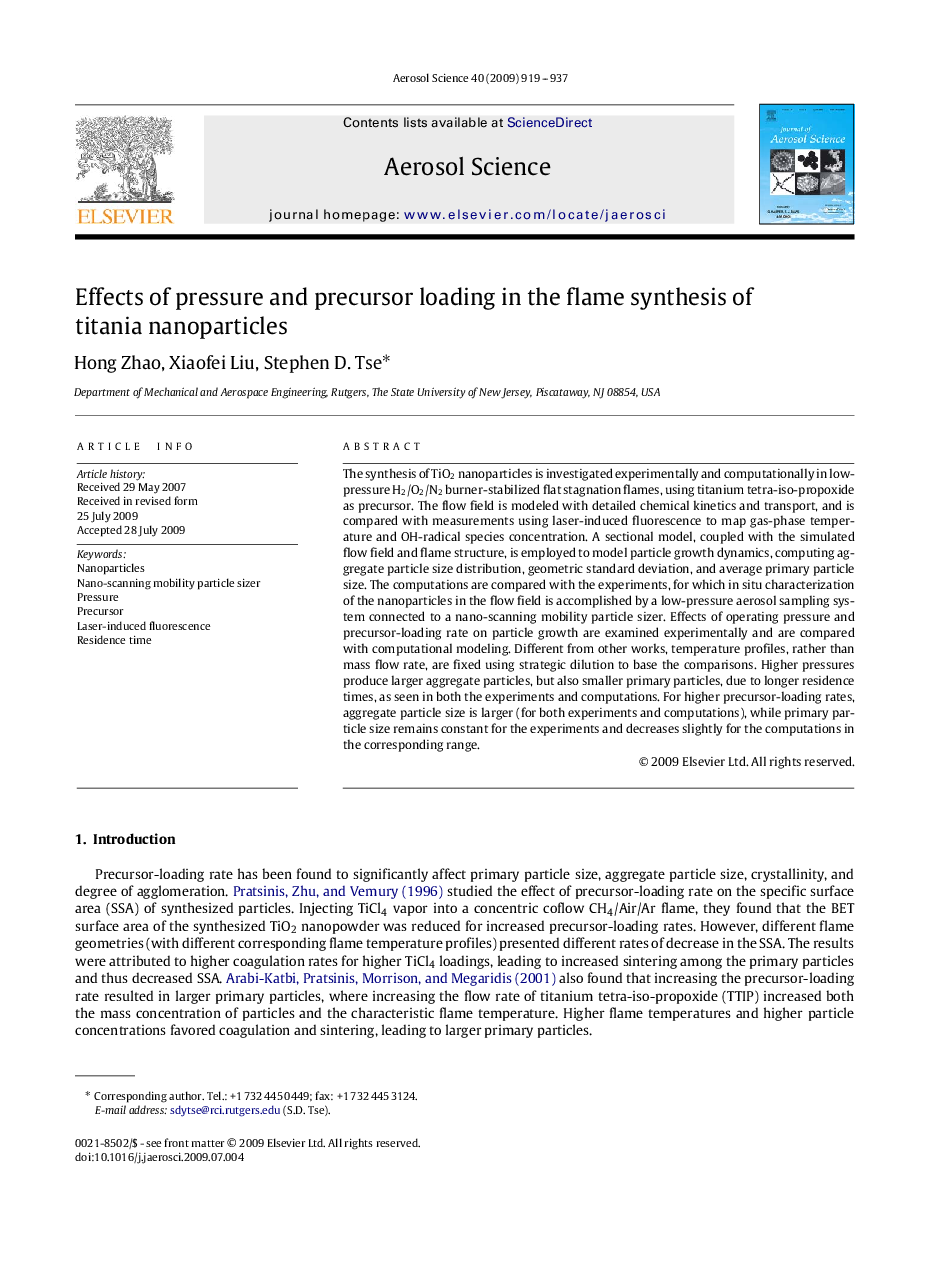| Article ID | Journal | Published Year | Pages | File Type |
|---|---|---|---|---|
| 4452934 | Journal of Aerosol Science | 2009 | 19 Pages |
The synthesis of TiO2 nanoparticles is investigated experimentally and computationally in low-pressure H2/O2/N2 burner-stabilized flat stagnation flames, using titanium tetra-iso-propoxide as precursor. The flow field is modeled with detailed chemical kinetics and transport, and is compared with measurements using laser-induced fluorescence to map gas-phase temperature and OH-radical species concentration. A sectional model, coupled with the simulated flow field and flame structure, is employed to model particle growth dynamics, computing aggregate particle size distribution, geometric standard deviation, and average primary particle size. The computations are compared with the experiments, for which in situ characterization of the nanoparticles in the flow field is accomplished by a low-pressure aerosol sampling system connected to a nano-scanning mobility particle sizer. Effects of operating pressure and precursor-loading rate on particle growth are examined experimentally and are compared with computational modeling. Different from other works, temperature profiles, rather than mass flow rate, are fixed using strategic dilution to base the comparisons. Higher pressures produce larger aggregate particles, but also smaller primary particles, due to longer residence times, as seen in both the experiments and computations. For higher precursor-loading rates, aggregate particle size is larger (for both experiments and computations), while primary particle size remains constant for the experiments and decreases slightly for the computations in the corresponding range.
